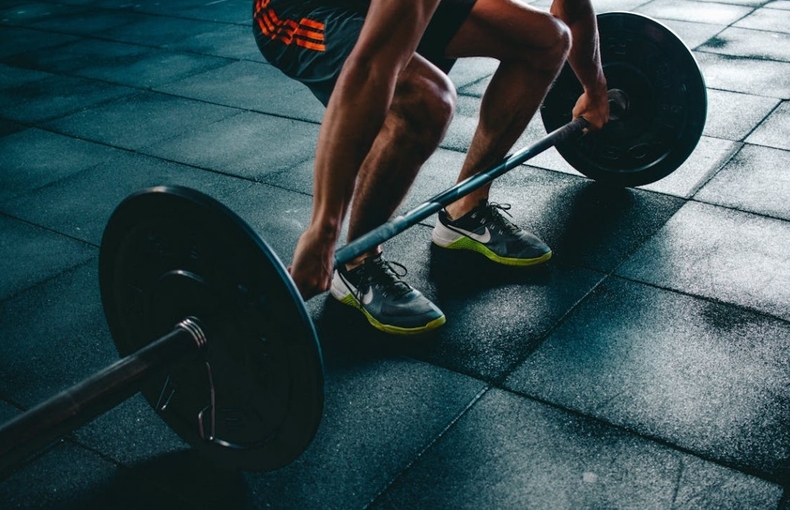
"Osteoporosis" refers to a condition where bones become weak and prone to fractures due to a decrease in bone density. Bones are living tissues that continuously undergo a process of removing old bone and forming new bone. The amount of bone in our bodies increases as we grow, but it gradually decreases as we age.
Particularly, women experience a rapid decrease in bone density within 3-5 years after menopause. When bones become weak due to osteoporosis, they can fracture easily, even with minor impacts. To minimize these risks, it is important to prevent osteoporosis early and manage it consistently.
There are various risk factors and causes, some of which are closely related to our lifestyle habits. Major causes include △ menopause △ family history △ lack of exercise △ calcium absorption disorders and vitamin D deficiency △ medications △ smoking and excessive alcohol consumption.
During menopause, the decrease in estrogen, which helps maintain bone strength, contributes to the development of osteoporosis. A family history of osteoporosis increases the likelihood of developing the condition. Lack of physical activity, such as weight-bearing exercises like walking, stair climbing, and jumping, can also lead to osteoporosis if not performed regularly.
Calcium is a major component of bones, so sufficient calcium intake is necessary to maintain healthy bones. If calcium intake is insufficient or if calcium absorption is impaired due to procedures like gastric surgery or chronic inflammatory bowel disease, osteoporosis may develop. Vitamin D, which aids in calcium absorption, is also essential; a deficiency can hinder calcium absorption and increase the risk of osteoporosis.
Medications such as steroids, excessive thyroid hormone supplements, anticonvulsants, and chemotherapy drugs can contribute to osteoporosis. Substances in tobacco reduce bone mass and can cause early menopause and a decrease in estrogen levels. Excessive alcohol consumption can inhibit bone formation and reduce calcium absorption, leading to osteoporosis.
Osteoporosis often shows no symptoms in its early stages. One of the early signs is vertebral compression fractures, leading to a reduction in height. Osteoporosis increases the risk of fractures, and in severe cases, even simple activities like bending the back or coughing can cause fractures. Common fracture sites include the wrist, spine, and hip.
The 10 guidelines for preventing and managing osteoporosis are as follows:
1. Engage in proper exercise and nutritional management during growth periods to prepare for the rapid bone loss that begins in the 50s. Bone mass peaks during adolescence and early adulthood (up to the early 30s), and bone mass starts decreasing gradually from around age 35. Consuming sufficient calcium and exercising between ages 18 and 30 can maximize bone mass and minimize bone loss in later years.
2. Maintain an appropriate body weight to avoid being underweight. Weight loss is a risk factor for bone loss, osteoporosis, and fractures, so if your body mass index (BMI) is below 18.5, gradually increase your weight until it reaches the normal range.
3. Consume adequate amounts of calcium and vitamin D, which are essential nutrients for bone health. Calcium-rich foods include milk, yogurt, tofu, seaweed, and green vegetables. Vitamin D is produced in the skin through sunlight exposure or can be obtained from foods like oily fish, egg yolks, and mushrooms.
4. Limit or avoid alcohol, coffee, and carbonated drinks. If you consume alcohol, limit it to 1-2 drinks per day, and reduce caffeine intake from coffee to no more than 2 cups a day.
5. Do not smoke. Smoking destroys osteoblasts (bone-forming cells) and hinders calcium absorption, making quitting smoking essential for osteoporosis prevention and treatment.
6. Engage in weight-bearing and balance exercises daily. Regular exercise strengthens bones and muscles, improves balance, and reduces the risk of falls, thus preventing osteoporosis and fractures. It is recommended to do weight-bearing exercises like brisk walking, light running, jumping rope, and stair climbing for 30-60 minutes daily, along with balance exercises like standing on one leg.
7. If you have risk factors, undergo regular bone density tests and consult with a doctor about the results. Women after menopause and elderly men experience rapid bone loss, increasing the risk of osteoporosis and fractures. If you have risk factors such as a family history, early menopause, past fractures, or height reduction, regularly get bone density tests and consult your doctor for management strategies.
8. Continuously manage osteoporosis. Untreated osteoporosis can lead to serious fractures. Even if bone density improves with treatment, continue the treatment to maintain progress.
9. Take precautions to prevent falls and improve your living environment. Most fractures due to osteoporosis occur from falls, so it is important to ensure safety in your surroundings. Install bright lighting, grab bars in the bathtub and shower, and floor mats; remove obstacles and moisture from the floor to reduce fall risk. If you are taking medication that may impair balance (e.g., antihypertensive drugs, tranquilizers, or antidepressants), exercise additional caution.
10. Prevent muscle loss in old age. Adequate muscle mass in old age helps maintain strength, preventing walking disabilities and falls. Consume enough protein daily and perform strength exercises 2-3 times a week to prevent muscle loss.
(한국어 번역)
한국다문화뉴스 = 심민정 기자ㅣ‘골다공’은 뼛속에 구멍이 많이 생긴다는 뜻으로, ‘골다공증’은 뼛속에 구멍이 많이 생겨 뼈의 강도가 약해져 쉽게 부러지는 질환이다. 뼈는 살아있는 조직으로 오래된 뼈는 제거되고, 새로운 뼈가 생성되는 과정이 끊임없이 반복된다. 우리 몸을 구성하는 뼈의 양은 성장하면서 점점 늘어나다 나이가 들수록 뼈의 양이 서서히 줄어들게 된다.
특히 여성은 폐경 직후 3~5년 동안 뼈의 양이 빠른 속도로 감소한다다. 골다공증으로 인해 뼈가 약해지면 작은 충격에도 쉽게 골절될 수 있다. 이러한 위험을 최소화하기 위해 골다공증을 미리 예방하고 꾸준히 관리하는 것이 중요하다.
위험 요소와 원인은 여러 가지나 일부는 우리 생활 습관에 밀접한 관련이 있다. 주된 원인은 △폐경 △가족력 △운동 부족 △칼슘 흡수 장애와 비타민D 결핍 △약물 △흡연과 과음 등이다.
폐경의 경우 뼈의 강도를 유지하는 역할을 하는 여성 호르몬이 감소하게 되며 골다공증이 발생하게 되는 원인으로 작용한다. 가족력은 가족 중에 골다골증이 있을 경우 발생할 확률이 높다. 운동이 부족할 경우도 골다공증이 발생할 수 있는데, 걷기나 계단 오르기, 점프 등 체중을 싣는 운동의 경우 뼈의 건강에 도움이 되나 이러한 운동이 부족할 경우이다.
칼슘은 뼈의 주요 구성 요소로 건강한 뼈를 유지하기 위해선 충분한 칼슘 섭취가 필요하다. 그러나 칼슘을 부족하게 섭취하거나 위 절제 수술, 장의 만성 염증 질환 등으로 칼슘이 제대로 흡수되지 않으면, 골다공증이 발생할 수 있다. 또 비타민D는 칼슘의 흡수를 돕는 역할을 하므로 비타민D가 부족하면, 칼슘의 흡수가 어려워져 골다공증의 위험이 커진다.
스테로이드 계통의 약물, 과량의 갑상샘 호르몬제, 항경련제, 항암제 등은 골다공증을 일으킬 수 있다. 담배에서 생성되는 물질은 뼈의 양을 감소시키고, 조기 폐경과 여성 호르몬의 감소를 일으킬 수 있다. 또 과도한 음주는 뼈의 형성을 방해하고 칼슘 흡수를 떨어뜨려 골다공증을 일으킬 수 있다.
골다공증은 초기에 특별한 증상이 나타나지 않는다. 초기 증상 중 하나는 척추뼈가 약해져서 척추에 압박골절이 발생되어 키가 줄어드는 것이다. 또 골다공증이 생기면 골절의 위험이 커진다. 심할 경우 일상생활 중에 허리를 구부리거나 기침을 할 때도 쉽게 뼈가 부러질 수 있다. 골절이 흔히 발생하는 부위는 손목, 척추, 대퇴골이다.
골다공증을 예방하고 관리하기 위한 10대 수칙은 다음과 같다.
1. 성장기에 적절한 운동과 영양관리를 통해서 50대부터 시작되는 급격한 골 소실에 대비한다. 뼈는 청소년기를 거쳐 30대 초기 성년기까지 ‘최대 골량’을 이루게 되며, 약 35세부터 뼈의 양이 서서히 감소한다. 18~30세 사이에 칼슘을 충분히 섭취하고 운동을 하면 뼈의 양이 최대로 형성되어 노년기의 뼈 손실을 최소화할 수 있다.
2. 저체중이 되지 않도록 적정 체중을 유지한다. 체중 감소는 골 감소와 골다공증, 골절을 일으키는 요인이므로 저체중(체질량 지수 18.5 미만)인 경우 정상 범위가 될 때까지 점진적으로 체중을 증가시켜야 한다.
3. 적정량의 칼슘과 비타민D를 섭취한다. 칼슘과 비타민D는 뼈의 가장 중요한 영양소이다. 칼슘이 풍부한 식품으로는 우유, 요구르트, 두부, 미역, 녹색채소류 등이 있다. 비타민D는 햇빛 노출을 통해 피부에서 생성되거나 등푸른생선, 달걀노른자, 버섯 등 식품으로 섭취할 수 있다.
4. 술과 커피, 탄산음료를 마시지 않거나 적당량 이하로 줄인다. 술, 커피, 탄산음료는 마시지 않는 것이 좋다. 술을 마시게 될 경우는 하루 1~2잔 이하로 줄이고, 커피 등 카페인 음료는 하루 2잔 이하로 줄이는 것이 좋다.
5. 담배는 피우지 않는다. 흡연은 뼈를 만드는 조골세포를 파괴하고, 칼슘 흡수를 방해하므로 골다공증의 예방과 치료를 위해서는 금연이 필수적이다.
6. 체중 부하 운동과 균형 운동을 가능한 한 매일 한다. 규칙적인 운동은 뼈와 근육을 강화하고, 균형 능력을 향상해 뼈를 보호하고 낙상 가능성을 줄여 골다공증과 골절을 예방하는 효과가 있다. 빠르게 걷기, 가볍게 뛰기, 줄넘기, 계단 오르기와 같이 체중을 싣는 운동을 가능한 한 매일 하루 30~60분 정도 하고, 외발서기 등 균형 운동 및 자세를 바르게 하는 운동을 매일 하는 것이 좋다.
7. 위험인자가 있는 경우 정기적으로 골밀도 검사를 받고, 그 결과를 의사와 상의한다. 폐경 이후 여성과 노년기 남성은 뼈 손실이 빠르게 진행되어 골다공증과 골다공증으로 인한 골절 발생 위험이 커진다. 가족력, 조기 폐경, 골절 경험, 키가 줄어든 경우 등의 위험인자가 있는 경우, 정기적으로 골밀도 검사를 받고 관리 방법을 의사와 상의한다.
8. 골다공증을 꾸준히 관리한다. 골다공증을 방치하면 심각한 골절이 생길 수 있다. 치료를 받아 골밀도가 조금 좋아졌다고 하더라도, 치료를 중단하지 말고 꾸준히 치료를 받아야 한다.
9. 넘어지지 않도록 주의하고 넘어지기 쉬운 생활환경을 개선한다. 골다공증으로 인한 골절은 대부분 넘어지면서 발생하므로, 넘어지지 않도록 주변 환경을 안전하게 개선하는 것이 중요하다. 밝은 조명, 욕조·샤워 시설 손잡이, 바닥 매트 등을 설치하고, 바닥에 있는 장애물을 정리하고 물기를 제거하여 넘어질 위험을 줄인다. 균형감각을 떨어뜨릴 수 있는 약(고혈압약, 신경안정제, 항우울제 등)을 복용 중이라면 더욱 주의해야 한다.
10. 노년기에는 근감소를 예방한다. 노년기의 적절한 근육량은 근력을 유지해 보행장애와 낙상을 예방하는 데 도움이 된다. 매일 충분한 단백질을 섭취하고, 1주일에 2~3회 근력 운동을 해서 근육이 줄어드는 것을 예방한다.





















